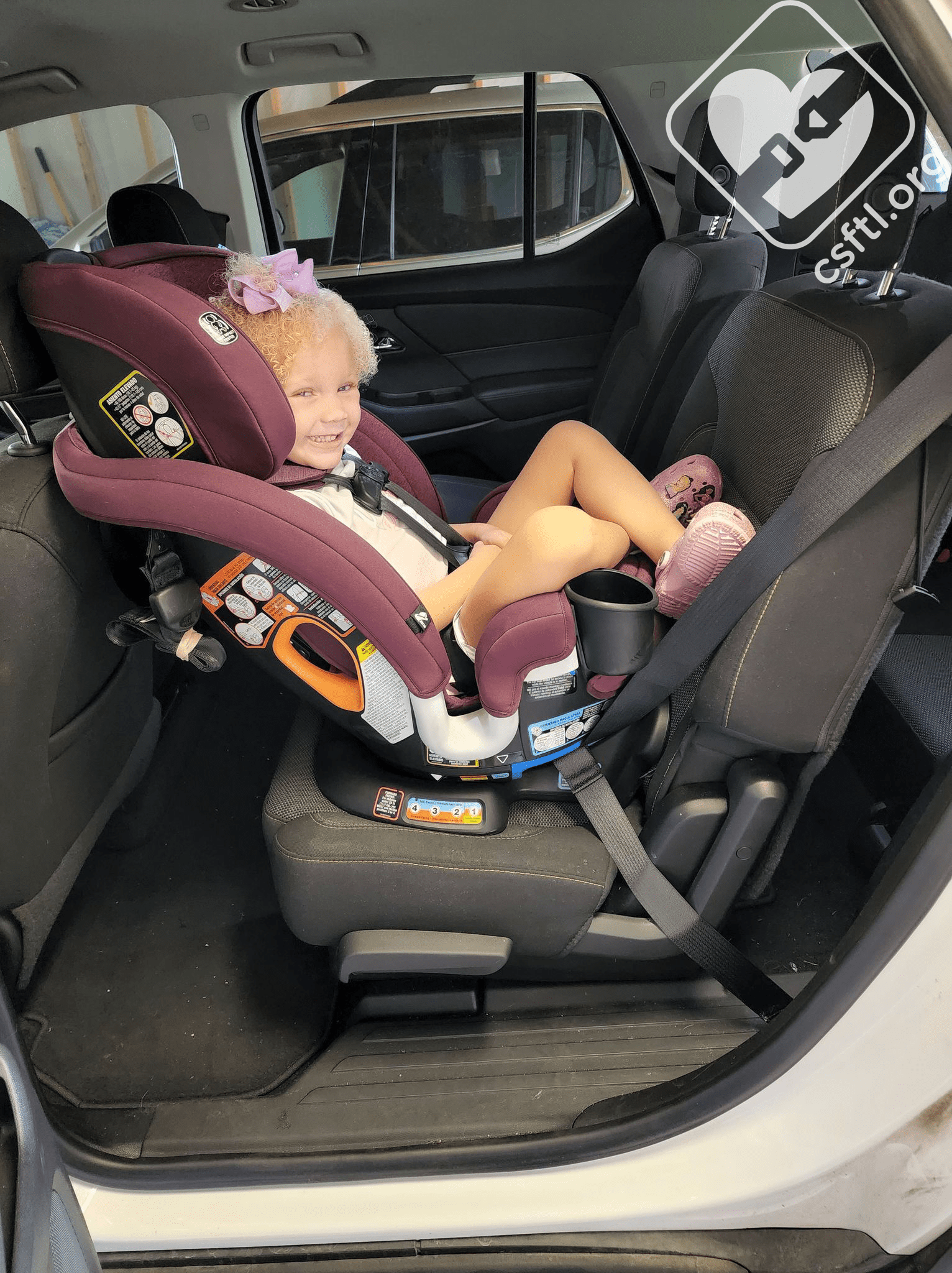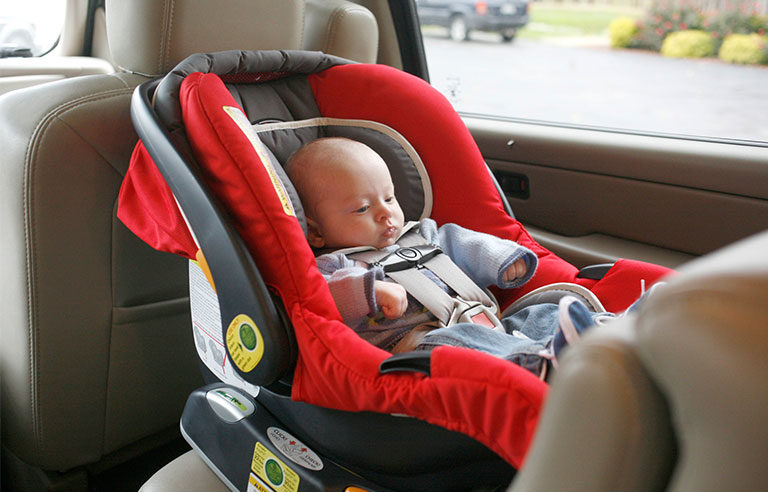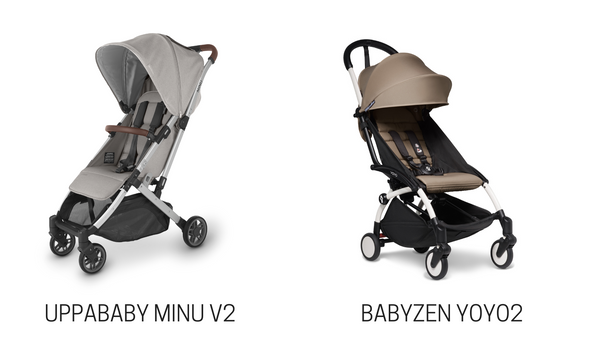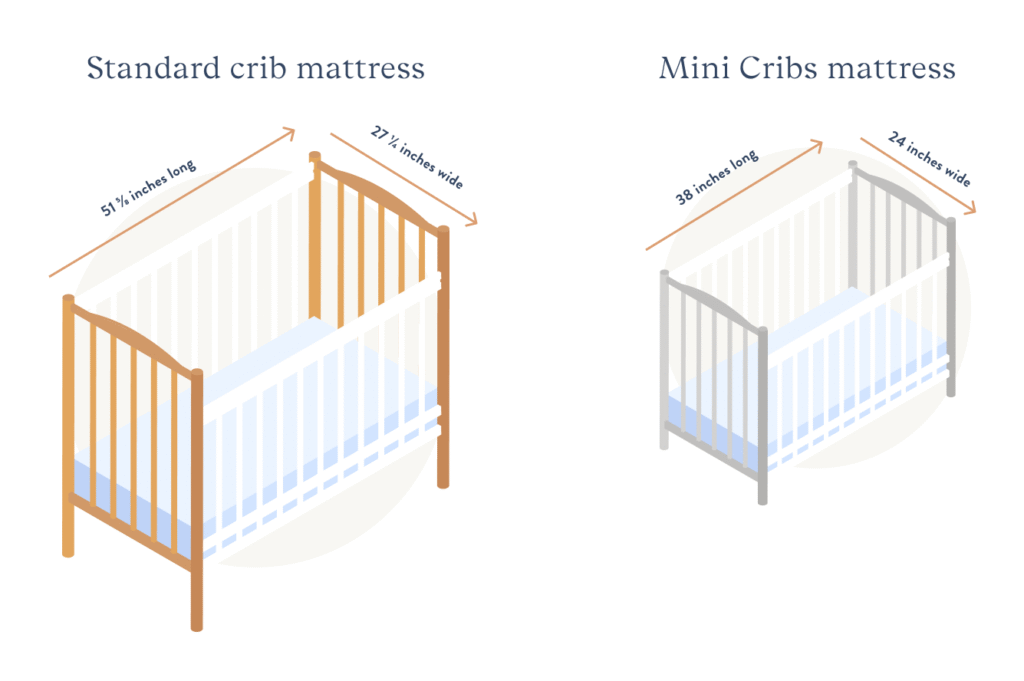Why are Baby Car Seats Rear Facing? Safety First Guide

Rear-facing car seats are essential for infant safety. They protect babies during sudden stops or accidents.
But why are they specifically rear-facing? This design isn’t just a random choice; it’s a crucial safety measure backed by research and expert guidelines. Rear-facing seats significantly reduce the risk of injury. They support the baby’s head, neck, and spine.
Young children are vulnerable to impact. Their bodies aren’t as strong as adults’. Rear-facing seats cushion the shock. They distribute force evenly across the body. This design minimizes harm and increases survival chances. Understanding the importance of rear-facing seats helps parents make informed decisions. It’s not just about following rules. It’s about ensuring the best protection for young ones on the road.

Credit: www.safetyandhealthmagazine.com
Importance Of Rear-facing Car Seats
Choosing the right car seat for your baby is crucial. Rear-facing car seats offer the best protection. They are designed to keep your child safe during travel. Understanding their importance can help you make informed decisions.
Enhanced Safety Features
Rear-facing car seats have better safety features. They distribute crash forces across the baby’s body. This reduces the risk of serious injuries. Their design supports a child’s head, neck, and spine. In a collision, these seats provide a protective shell. This helps absorb impact and keep your child safe.
Impact On Child’s Development
Rear-facing seats support healthy physical development. They allow your baby to sit naturally. This position supports head and neck growth. It minimizes stress on developing bones and muscles. Comfort plays a role in emotional well-being. A secure, comfortable child is happier during travel.
Historical Context Of Car Seat Designs
The way baby car seats are designed today has roots in the past, shaped by decades of innovation and adjustments. Understanding the historical context of car seat designs reveals the reasons why rear-facing seats have become the standard for infant safety. It’s a journey that blends technological advancements with rigorous safety regulations, ensuring your little ones travel safely.
Evolution Over Decades
Baby car seats have undergone significant transformations since their inception. Initially, car seats were more about keeping children in one place rather than safety. Imagine the early designs that focused solely on convenience. Over time, awareness grew about the importance of protecting infants from potential car accidents.
As technology advanced, so did the design of car seats. Manufacturers began to prioritize safety features, such as harnesses and padding. The shift towards rear-facing seats was informed by studies showing it offers better protection for a baby’s vulnerable head and neck. Have you ever wondered how many lives these changes have saved?
Influence Of Safety Regulations
Safety regulations have played a crucial role in shaping car seat designs. Governments around the world started to impose strict guidelines, ensuring manufacturers comply with safety standards. These regulations pushed for improved designs, making rear-facing seats a necessity for infants under a certain age.
These rules are not just about compliance; they are based on research and crash test data that highlight the effectiveness of rear-facing seats. Have you noticed how these regulations have made choosing a car seat more straightforward for parents? It’s comforting to know you’re following guidelines that prioritize your child’s safety.
Reflect on how these historical shifts have shaped the current landscape of car seat designs. By understanding the past, you can appreciate the safety measures in place today. Isn’t it fascinating how lessons from history continue to protect our future generations?
Physics Behind Rear-facing Seats
Understanding the physics behind rear-facing baby car seats is crucial. These seats are designed to offer optimal protection during a collision. The design is not random; it is backed by scientific principles. Let’s explore these principles to understand their importance.
Force Distribution In Collisions
Rear-facing seats distribute collision forces more evenly. In a crash, force impacts the seat, not the child directly. The seat absorbs and spreads this force across its structure. This minimizes stress on the child’s body. Less stress means a higher chance of avoiding injury.
Protection Of Vulnerable Areas
Children have more vulnerable areas, like the neck and spine. Rear-facing seats protect these regions better. They support the child’s head, neck, and back. This support reduces the risk of serious injuries. Safety experts recommend rear-facing seats for this reason.

Credit: csftl.org
Common Misconceptions
Rear-facing car seats for babies are widely recommended for safety. Yet, many parents hold misconceptions about their necessity. These misunderstandings can lead to incorrect usage and increased risk. Let’s explore some common myths.
Age And Size Myths
Some parents believe rear-facing seats are only for infants. This myth can put toddlers at risk. Experts recommend keeping children rear-facing until age two. Rear-facing provides better protection in accidents. It reduces stress on the child’s neck and spine.
Another myth concerns the child’s size. Some think bigger babies need front-facing seats. Size doesn’t determine safety in crashes. Rear-facing seats cater to different sizes and weights. They ensure optimal protection regardless of the child’s growth.
Comfort Concerns
Parents worry rear-facing seats might be uncomfortable. They think kids can’t stretch their legs. Children are more flexible than adults. They can sit comfortably even with bent legs. Rear-facing seats offer adequate space for leg positioning.
Another concern is visibility. Parents think kids won’t see much. Children enjoy observing surroundings and objects within the car. Rear-facing seats don’t hinder this experience. They offer a clear view out of the car’s rear window.
Legal Guidelines And Recommendations
Baby car seats face backward because it offers better protection for a child’s head, neck, and spine in accidents. Rear-facing seats distribute crash forces evenly, reducing risk of injury. Safety experts recommend keeping children rear-facing as long as possible for optimal safety during travel.
When it comes to the safety of your little one on the road, legal guidelines and recommendations play a crucial role in ensuring the best protection. Rear-facing baby car seats are not just a preference but a legal requirement in many places, designed to safeguard infants in the event of an accident. Understanding these guidelines can sometimes be overwhelming, but it’s vital for every parent or caregiver to be informed.###Current Laws By Region
Navigating the current laws regarding rear-facing car seats can feel like a maze. But knowing your region’s specific requirements is essential. In the United States, for example, the American Academy of Pediatrics recommends that children remain rear-facing until at least age two. Some states like California and New Jersey have made it a legal requirement.In Europe, the regulations are slightly different. The European Union mandates that children must be rear-facing until they reach at least 15 months. However, countries like Sweden are known for their stricter guidelines, advocating rear-facing seats until age four.Where do you live, and how do the laws reflect the safety of your child? It’s worth checking your local regulations and ensuring you’re compliant.###Expert Advice On Duration
You might be wondering, how long should my child remain in a rear-facing seat? Experts emphasize the importance of keeping them in this position for as long as possible. The reason is simple: a rear-facing seat better supports the head, neck, and spine in a collision.Dr. Sarah H., a pediatrician and mother of two, shares her personal insight: “When my first child was born, I was adamant about following the guidelines. It wasn’t just about legal compliance; it was about peace of mind knowing my child was as safe as possible.”Most experts agree that children should stay rear-facing until they outgrow the seat’s height and weight limits. This could mean age two, three, or even four, depending on your car seat model.Have you checked the manual of your car seat? It might surprise you how long your child can safely remain rear-facing.Choosing to follow these legal guidelines and expert recommendations not only keeps you on the right side of the law but also ensures your child’s safety on every journey.Choosing The Right Car Seat
Baby car seats are rear-facing to protect the child’s head, neck, and spine. This position reduces the risk of injury during sudden stops or crashes. Rear-facing seats provide crucial support for a baby’s fragile body. They ensure safety and comfort for young passengers.
Choosing the right car seat for your baby is crucial. Safety is the top priority for parents. Rear-facing car seats are essential for infants. They provide maximum protection in case of a crash. Understanding their importance helps in making informed decisions.Key Features To Look For
Safety should be your first consideration. Check for a five-point harness. It secures your baby snugly in the seat. Look for side-impact protection. This feature absorbs energy during a collision. Ensure the seat has a sturdy frame. It should be made from high-quality materials. Adjustable harnesses and headrests are important. They accommodate your growing child comfortably. Consider easy installation options. A car seat should fit securely in your vehicle.Top-rated Models
Many models stand out for their safety features. The Graco Extend2Fit is popular among parents. It offers extended rear-facing capabilities. The Britax Boulevard ClickTight excels in ease of installation. It provides peace of mind with its ClickTight system. The Chicco KeyFit 30 is another favorite. It’s known for its user-friendly features and safety. Each of these models prioritizes your child’s protection. Choose one that fits your needs and budget.Installation Tips And Best Practices
Rear-facing baby car seats are essential for your child’s safety. Proper installation is crucial to ensure maximum protection. Many parents worry about getting it right. These tips and best practices will help you install the seat correctly. Safety should always be the top priority.
Ensuring Proper Fit
A proper fit is vital for a rear-facing car seat. Check the car seat manual for specific instructions. The seat should not move more than an inch side to side. Use the seat belt or LATCH system to secure it. Ensure the harness straps are at or below your child’s shoulders. The chest clip should be at armpit level. Adjust the recline angle as recommended. This prevents your baby’s head from flopping forward.
Regular Maintenance Checks
Regular checks keep the car seat in top condition. Inspect the seat for any wear or damage. Check the harness straps for fraying. Make sure the buckle works smoothly. Verify that the seat is still tightly installed. Remove any debris from the seat and buckle. Clean the seat covers according to the manufacturer’s guidelines. Keeping the seat clean ensures it functions well. Regularly update yourself on any recalls related to your car seat model.
Future Trends In Car Seat Safety
Baby car seats are rear facing to enhance safety. This design reduces risk during collisions. Protects baby’s head and neck effectively. Safety experts recommend rear-facing seats for infants and toddlers. Prioritize protection during travel with this setup.
When thinking about the future of car seat safety, there is much to be excited about. Emerging trends and innovations are poised to enhance the security and comfort of our little ones on the road. As technology advances and standards evolve, it’s essential to stay informed and prepared for what’s next in car seat safety.Technological Innovations
Imagine a car seat that adjusts its position based on the speed of your car or the weather conditions outside. This isn’t science fiction. New technologies are already making car seats smarter. Some models feature integrated sensors that can detect a child’s temperature or movement, alerting parents if something is amiss.There’s also potential for app-based connectivity, allowing you to monitor and adjust your child’s seat settings from your smartphone. Such technology could ease parental concerns and provide added peace of mind. What would you think about receiving an alert if your child unbuckles their seatbelt while you’re driving?Predicted Changes In Standards
With safety as a top priority, changes in car seat standards are on the horizon. Experts predict stricter regulations that will require more rigorous testing of car seats in different crash scenarios. This means manufacturers will need to innovate and ensure their products provide maximum protection in every situation.Look out for updated guidelines that may extend the recommended rear-facing age, following the latest research on child safety. These changes aim to keep our children safer for longer periods. Are you ready to adapt to new standards and ensure your car seat meets the latest safety requirements?As we look to the future, it’s clear that both technology and regulations will play a crucial role in the evolution of car seat safety. Staying informed and open to these changes will ensure your child’s safety on the road.
Credit: www.thule.com
Frequently Asked Questions
Why Do Babies’ Car Seats Face Backwards?
Babies’ car seats face backwards for safety. Rear-facing seats protect infants’ heads, necks, and spines during collisions. This position absorbs impact forces, reducing injury risks. Experts recommend rear-facing until at least age two for optimal protection. Proper installation and usage are crucial for maximizing safety benefits.
Why Can’t Babies Face Forward In Car Seat?
Babies must face backward in car seats for safety. Rear-facing seats support their head, neck, and spine in crashes.
Why Should Baby Seats Be Rear-facing?
Rear-facing baby seats protect infants’ head, neck, and spine in collisions. They distribute crash forces evenly, minimizing injuries. These seats are crucial for safety, especially for young children with developing muscles and bones. Following expert recommendations, rear-facing seats are the safest choice for babies up to age two.
When Can Babies Face Forward In A Car Seat?
Babies can face forward in a car seat after reaching two years old or exceeding the rear-facing seat limits. Ensure the car seat meets safety standards for forward-facing use. Always follow the manufacturer’s guidelines and consult local regulations for specific requirements.
Safety should be the top priority when transitioning car seats.
Why Are Rear-facing Seats Safer For Babies?
Rear-facing seats protect the baby’s head, neck, and spine in crashes. They distribute force evenly across the body.
Conclusion
Rear-facing baby car seats are crucial for child safety. They provide better protection during accidents. Young children have delicate necks and spines. Facing backward offers more support. Parents should prioritize their child’s safety. Follow guidelines for car seat installation. Check weight and height limits regularly.
Keep your child rear-facing as long as possible. It ensures maximum safety and peace of mind. Always choose the right seat for your child’s size. Stay informed and make safety a priority. Your child’s safety journey starts with the right seat choice.
Make every ride a secure one.







